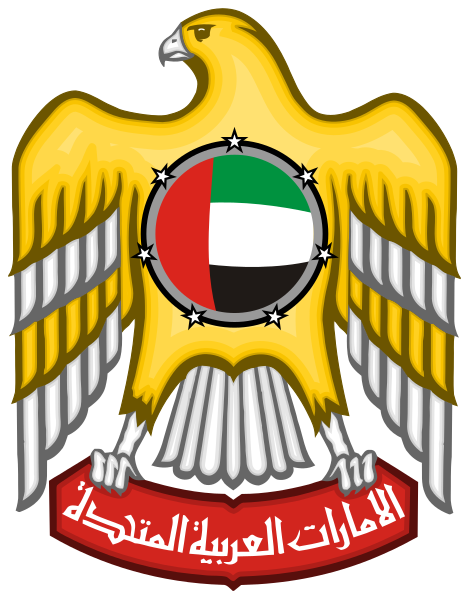About AE

Location
The United Arab Emirates is a country located in the southeastern part of the Arabian Peninsula in Southwest Asia. It is bordered by Oman to the southeast and Saudi Arabia to the south and west, as well as sharing maritime borders with Qatar to the west and Iran to the north.
Capital
The capital city of the United Arab Emirates is Abu Dhabi.
Population
The UAE has a population of approximately 9.9 million people, according to 2021 estimates.
Languages
Arabic is the official language of the UAE, although English is widely spoken, especially in the business and tourism sectors.
Ethnicity
The population of the UAE is diverse, consisting of both Emirati citizens and expatriate residents from various countries around the world. Emiratis make up a minority of the population, with expatriates comprising the majority.
Geography
The UAE is characterized by its desert landscape, with vast stretches of sandy desert, including the Rub' al Khali, or Empty Quarter, one of the largest sand deserts in the world. The country also has a coastline along the Arabian Gulf (also known as the Persian Gulf) to the north and west, and the Gulf of Oman to the east.
Economy
The UAE has a highly developed and diversified economy, with key sectors including oil and gas, tourism, real estate, finance, and trade. The country is one of the world's largest oil producers and exporters, and its economy has benefited from significant investments in infrastructure and development projects.
Currency
The currency of the United Arab Emirates is the UAE Dirham (AED).
Government
The UAE is a federal absolute monarchy with a unique political system. It consists of seven emirates, each governed by its ruler, or emir, who collectively form the Federal Supreme Council. The President of the UAE is elected from among the rulers of the seven emirates, and the Prime Minister is appointed by the President.
Culture
The culture of the UAE is influenced by Islamic traditions and Arab heritage, as well as the country's cosmopolitan population. Traditional Emirati customs and hospitality are highly valued, alongside modern amenities and lifestyle. The UAE is known for its iconic skyscrapers, luxury shopping malls, and cultural landmarks such as the Sheikh Zayed Grand Mosque in Abu Dhabi and the Burj Khalifa in Dubai.

National Items of the United Arab Emirates
Arabian Oryx
The Arabian Oryx (Oryx leucoryx) is the national animal of the United Arab Emirates. It symbolizes resilience, grace, and the country's successful conservation efforts.
Falcon
The Falcon is a significant cultural symbol in the UAE, representing strength, heritage, and the traditional sport of falconry, which is deeply rooted in Emirati culture.
Palm Tree
The Palm Tree (Phoenix dactylifera) is a national symbol of the UAE. It represents sustenance, prosperity, and the traditional importance of date cultivation in Emirati society.
Arabian Camel
The Arabian Camel (Camelus dromedarius), also known as the dromedary, symbolizes endurance, adaptability, and the historical significance of camels in Bedouin life and the desert environment.
Dubai’s Burj Khalifa
The Burj Khalifa is an iconic skyscraper in Dubai, symbolizing modernity, architectural innovation, and the UAE's rapid development and economic strength.
Sheikh Zayed Grand Mosque
The Sheikh Zayed Grand Mosque in Abu Dhabi represents the religious heritage, architectural grandeur, and spiritual significance of Islam in the UAE.
Ghutra and Abaya
Traditional Emirati dress includes the Ghutra for men and the Abaya for women. These garments symbolize cultural heritage, modesty, and traditional fashion.
Majlis
The Majlis is a traditional meeting place in Emirati culture. It symbolizes hospitality, community, and the importance of social gatherings and discussions.
Date Fruit
Dates are a staple food and a traditional symbol of the UAE. They represent hospitality, nutrition, and the agricultural heritage of the country.
Pearl
Pearling was historically an important industry in the UAE. Pearls symbolize the rich maritime heritage, economic history, and cultural significance of the Gulf region.
Dhow
The Dhow is a traditional sailing vessel used in the Arabian Gulf. It represents the maritime heritage, craftsmanship, and historical significance of trade and fishing.
Arabian Coffee (Gahwa)
Arabian Coffee, known as Gahwa, is a traditional beverage in the UAE. It symbolizes hospitality, cultural traditions, and social customs.
Falaj
The Falaj irrigation system is an ancient method used in the UAE. It symbolizes agricultural ingenuity, sustainability, and the historical importance of water management in the desert.
Al-Ain Oasis
The Al-Ain Oasis is a UNESCO World Heritage site that symbolizes the rich agricultural heritage, natural beauty, and historical significance of the region.
Desert
The desert itself is a powerful symbol of the UAE, representing the natural environment, resilience, and the Bedouin heritage of the Emirati people.

The national anthem of the United Arab Emirates is called "Ishy Biladi" in Arabic, which translates to "Long Live My Nation" in English. Here are the lyrics in Arabic and their English translation:


